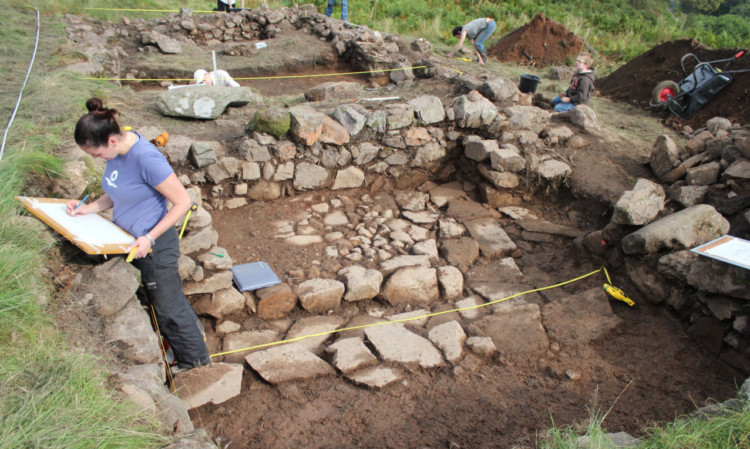A ruined two-roomed stone building on the slopes behind Castle Campbell in Dollar is likely to have been a medieval hunting lodge used by visitors to the castle.
Archaeologists initially believed the structure was an ancient house but a joint Ochils Landscape Partnership and National Trust for Scotland excavation team has reached the new conclusion after the Dig Dollar Glen 2013 effort.
The team discovered that the building’s remains sit centrally within a complex of banks and enclosures identified as features associated with the hunting estate.
The volunteers and experts unearthed a number of significant finds, including shards of pottery, glass wine bottles and vessels, window glass and iron objects dating from the mid 17th century, with the vast majority of finds coming from the larger room to the north east of the structure.
Dr Kirsty McAlister, the research and interpretation officer from the Ochils Landscape Partnership, said: “The type of objects we have found during this week-long excavation indicate that this building had a very high status.
“Other evidence in our findings is that the square room to the south east contained a well-built, central, stone-lined drain surrounded by flagged and cobbles surfaces. In the corner of this room was a raised rectangular stone feature possibly a stone trough or plinth.
“This room may well have been a byre or stable of some sorts and perhaps even a butchery for the deer which would have been hunted on the estate.
“It has been a very exciting and rewarding project for us all to be involved in, not least because there have been such a number of significant finds which have enabled us to come to our conclusions.”
When the finds have been properly appraised, they may be displayed at Dollar Museum.
Dr McAlister said: “One of the aims of the Ochils Landscape Partnership is to help local people gain a better understanding of how the Ochils landscape was used in the past. Discovering more about this structure has certainly enabled us to do this.
“We know that the inhabitants of Castle Campbell would have been high-ranking and this is backed up with them having their own hunting lodge.”
